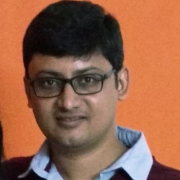

Find out what your peers are saying about IBM, Salesforce, Oracle and others in Enterprise Service Bus (ESB).
| Product | Market Share (%) |
|---|---|
| Mule ESB | 17.6% |
| IBM Integration Bus | 20.4% |
| webMethods.io | 11.3% |
| Other | 50.7% |
| Product | Market Share (%) |
|---|---|
| Oracle SOA Suite | 3.6% |
| Apache Web Server | 11.4% |
| IIS | 10.5% |
| Other | 74.5% |


| Company Size | Count |
|---|---|
| Small Business | 23 |
| Midsize Enterprise | 6 |
| Large Enterprise | 36 |
| Company Size | Count |
|---|---|
| Small Business | 13 |
| Midsize Enterprise | 15 |
| Large Enterprise | 40 |
Oracle SOA Suite is a comprehensive, standards-based software suite to build, deploy and manage integration following the concepts of service-oriented architecture (SOA). The components of the suite benefit from consistent tooling, a single deployment and management model, end-to-end security and unified metadata management. Oracle SOA Suite helps businesses lower costs by allowing maximum re-use of existing IT investments and assets, regardless of the environment (OS, application server, etc.) they run in, or the technology they were built upon. Its easy-to-use, re-use focused, unified application development tooling and end-to-end lifecycle management support further reduces development and maintenance cost and complexity.
For more information on Oracle SOA Suite, visit Oracle.com
We monitor all Enterprise Service Bus (ESB) reviews to prevent fraudulent reviews and keep review quality high. We do not post reviews by company employees or direct competitors. We validate each review for authenticity via cross-reference with LinkedIn, and personal follow-up with the reviewer when necessary.